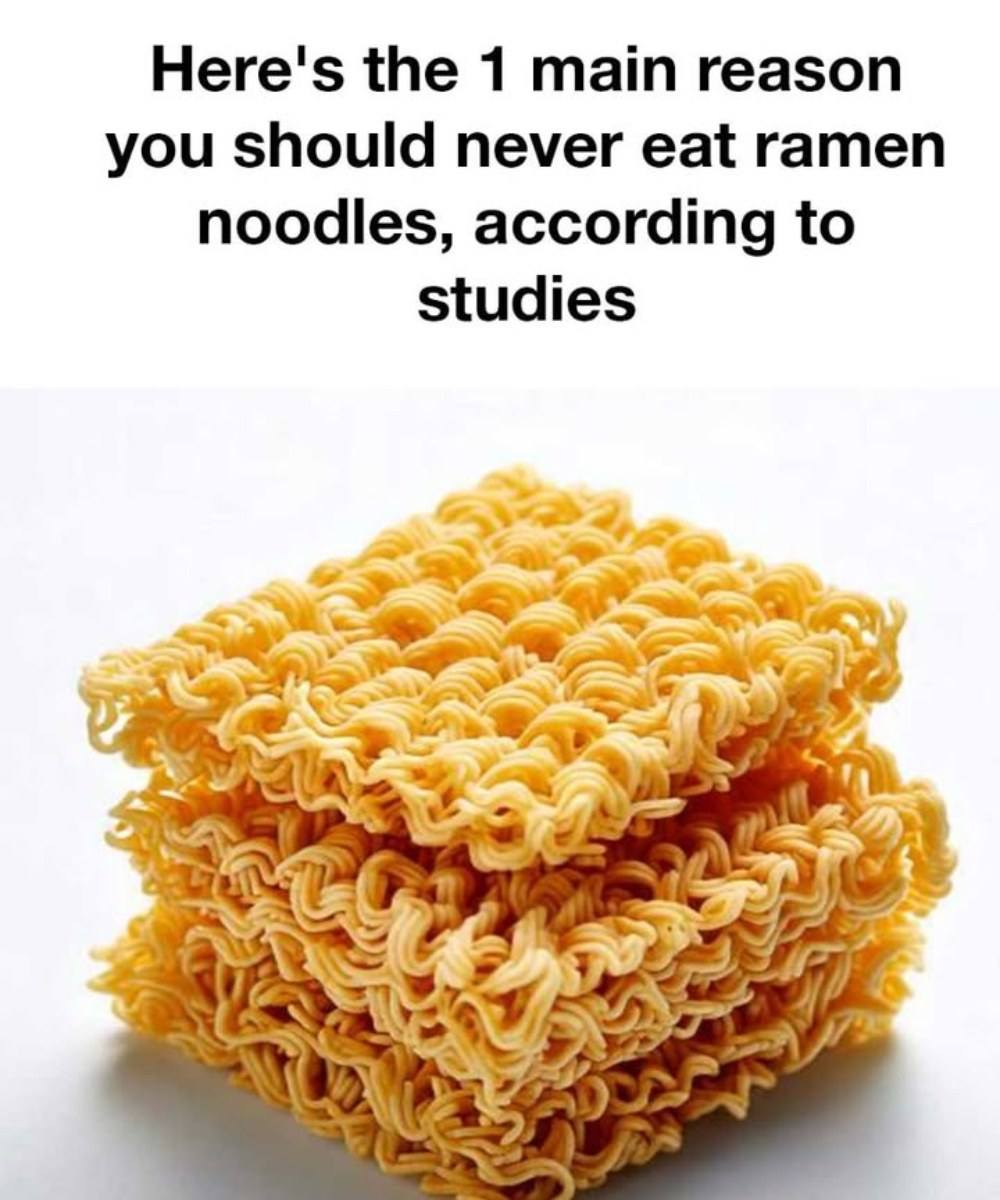I had no idea about this until recently, but it turns out that ramen noodles—a staple in many college dorm rooms, office breakrooms, and kitchens across the country—might come with some hidden risks that most people never think twice about. Sure, we’ve all heard about how ramen isn’t exactly a health food. It’s known for being high in sodium, low in nutrients, and not exactly the most balanced meal out there.

But the real concern goes deeper than just salt or empty calories. One ingredient in particular, a preservative called tertiary butylhydroquinone, or TBHQ, has raised serious questions among health experts. While it plays an important role in keeping processed foods fresh for longer, consuming large amounts of this chemical over time could pose serious health risks. TBHQ is a synthetic antioxidant that’s often added to processed foods to prevent fats and oils from going bad. It helps stop oxidation, which can cause food to spoil, change color, or develop a bad taste.
From a manufacturing standpoint, TBHQ is extremely useful—it helps extend shelf life and makes products like ramen noodles more convenient and cost-effective. This is part of why ramen can last so long in your pantry without going bad. But while it might be great for food manufacturers, it’s not necessarily great for our health. In ramen noodles, TBHQ is often used to preserve the flavor packet or the fried noodles themselves.
Even though the amount used in any single serving is within the limits set by the FDA, the problem arises when people eat processed foods containing TBHQ on a regular basis. It’s not just in ramen—this preservative can also be found in items like frozen meals, crackers, chips, and even some cereals. The concern is that repeated exposure over time, especially for those who eat processed foods frequently, might lead to negative effects.
Animal studies have shown that high doses of TBHQ can be linked to a variety of health issues, including damage to the immune system, liver enlargement, and even precancerous changes in cells. While these studies involve levels of TBHQ far beyond what the average person would consume in a day, they still raise red flags about long-term exposure. Another major concern is the potential link between TBHQ and behavioral problems. Some research has suggested that synthetic food additives like TBHQ could contribute to hyperactivity in children, though more studies are needed to fully understand the relationship. Still, it’s enough to make many parents take a second look at ingredient labels, especially on foods marketed toward kids. In addition to its potential effects on behavior and organ health, TBHQ has also been linked to allergies and sensitivities in some individuals. Though rare, some people may experience skin rashes, asthma-like symptoms, or other allergic reactions after consuming products with TBHQ. Because this preservative is so widespread in the processed food industry, it can be hard to avoid unless you’re really paying attention. So what can you do about it? The good news is that cutting back on TBHQ isn’t impossible. The key is to reduce your intake of ultra-processed foods overall. Try to cook more meals at home using whole ingredients. Choose fresh vegetables, lean proteins, and whole grains whenever possible. If you do eat packaged foods, make it a habit to read the ingredient list. Look for products that are preservative-free or use natural alternatives. And if you’re a fan of ramen noodles, try swapping them out occasionally with healthier options. There are many brands now that offer ramen made with air-dried noodles, less sodium, and no artificial preservatives. In conclusion, while ramen noodles are convenient and tasty, they come with hidden concerns that go beyond what’s obvious on the nutrition label. The presence of TBHQ might seem harmless in small amounts, but the long-term effects of frequent consumption are still being studied. Understanding what’s in your food is one of the most powerful tools you have when it comes to protecting your health. So the next time you grab a quick bowl of ramen, take a moment to consider what else you might be putting into your body—it could be more than just noodles and broth.





